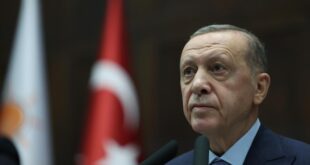In previous articles for Katehon I have dealt with the alternative to international finance – usury – as being for the State to assume the prerogative to create and issue its own credit. Although this has been successfully done throughout history, bringing prosperity to those states and even local communities that have, the idea continues to be derided by politicians and economists as “inflationary” and often disparaged without debate as “funny money.” Yet “fiat money” and “Quantitate Easing” ironically are used as a last resort by states when financial chaos threatens because of debt accumulation. Then “fiat money” and QE suddenly become acceptable, and indeed bail-out the banks that created the debt and that are normally adamant in their opposition to state interference in finance. What is crucially missing in the recent use of “fiat money” and QE however is that instead of the state printing and issuing money directly to the community through a “basic income” or “national dividend”, or spending it into circulation via state projects, it is advanced to the private banking system. So far from reducing debt therefore, the credit advanced to the banks is used to accumulate further debt. It is therefore not fiat money that is a problem, but the manner by which it is circulated. Hence state credit and money are anathema to the plutocrats until needed to prop up their debt system and get them out of problems of their own making.
The creative use of fiat money on a wide, nation-wide scale was that of the $4,000,000,000 U.S. Treasury Notes issued under the Kennedy Administration in 1963. It is significant that these were Treasury Notes and not Federal Reserve currency. They were circulated into the economy, bypassing the banking system and thereby being a debt-free means of increasing the money supply. Lincoln issued $150,000,000 “Lincoln Greenbacks,” but this was undermined and replaced by the National Banking Act of 1863 which authorized what was tellingly called “interest bearing and compound interest treasury notes.” (See: K R Bolton, “The Banking Swindle,” London, 2013, p. 88). States and communities (via local currencies, coupons or “scrip”) such as what I have previously written in “Katehon” in regard to the Russian village “Kolionovo” currency, show that credit and currency can and should be issued precisely NOT as “interest bearing” with “compound interest,” or in short what has for millennia been condemned as “usury” by every major religion until the Reformation.
New Zealand was among the pioneers of the modern issue of state credit during the 1930s. The First Labour Government nationalized the Reserve Bank in 1935, and began shortly after issuing state credit, initially for the construction of state houses. There was no inflation; just production and the revival of the economy during the Great Depression. Now ironically there is a housing crisis in New Zealand with a lot of recent media attention being focused on the homeless. The government does not know how the overcome the crisis by simply building state houses with state credit, because sate interference in the economy, and especially in the financial system, has for decades been treated as anathema by both National and Labour parties. Moreover, even academics and politicians do not recall the use of state credit in bygone years; it is as though this was a mythic era around which there is a fog of forgetfulness. Historians mentioning the state housing programs of the 1930s do not even allude to how they were funded. I have recently reprinted two significant pamphlets by the famous New Zealand Labour politician John A Lee on the 1930s New Zealand state banking system. These pamphlets, “Money Power for the People,” and “A Letter which every New Zealander should read,” can for the first time since the 1930s be read in my book “Opposing the Money Lenders” (London, 2016, pp. 39-93).
The continuing potentialities of state credit were reaffirmed, albeit not with approval, by the Governor of the New Zealand Reserve Bank in 1996. It had been the same Reserve Bank that had precisely sixty years previously issued the state credit that brought New Zealand out of the Depression. However, the Governor of the Reserve Bank was in 1996 Dr Don Brash, a zealous exponent of market economics and non-inference of the state in banking. Brash has a distinguished career in international banking. Having been leader of the National Party and briefly leader of the fringe libertarian ACT Party, Brash has been a university lecturer in economics, served as an economist in Washington with the World Bank in 1966; returning to New Zealand in 1971 to become director of Broadbank Corporation, and in 1986 as general manager of Trust Bank. For fourteen years, from 1988, he was Governor of the New Zealand Reserve Bank. It was under Brash that the Reserve Bank became free to pursue monetary policy without state interference, under the Reserve Bank Act of 1989, establishing a contractual relationship between Government and Bank. (See “Don Brash,” http://www.donbrash.com/about-don/). Since then any notion that the state should have direction over banking is regarded as heresy. It is a notion held just as much by the “Left-wing” Labour Party as it is by the National Party. Like many free market enthusiasts, Brash started on the “Left” of politics,” and shifted over to free market economics (many of the ACT Party founders had been Labour Party stalwarts such as Trevor De Cleene, Richard Prebble, Roger Douglas) while the onetime avid socialist Mike Moore became director of the World Bank and an attendee of the Bilderberg conferences. It follows a pattern among the Left word-wide.
Dr Brash’s 1996 Letter
With this background, Dr Brash’s detailed answer to an enquirer on the nature of banking and international finance has many highly significant features. In 1996 (28 October) an enquirer asked Dr Brash a large number of questions on the character of money and credit, and on the power of international banks over state policy. Dr Brash answered each question in surprising detail. The first series of questions is:
(a) Where does money come from (in particular, New Zealand’s)?(b) What is its value based on (anything intrinsic)?
(c) Who issues it, and is this source entirely New Zealand controlled?
(d) Who dictates and controls the amount in circulation?
Dr Brash replied on Reserve Bank letterhead (25 November), on the question of where does money come from?:
“In New Zealand, as in virtually all countries with a modern monetary system, ‘money’ comprises liabilities issued by the Reserve Bank (notes and coin) and by commercial banks and similar financial institutions (cheque account and other liquid deposits).
“Commercial bank deposits are controlled by banks’ lending. When a bank makes a loan, it will, in the first instance, deposit the proceeds to the borrower’s account. Of course, the borrower invariably raises funds to spend them, so the proceeds (deposits) will typically end up in the bank account of someone other than the borrower – often at another bank than that which made the loan. However, it remains that bank loan transactions ultimately lie behind the deposit of balances which banks hold. By influencing interest rates, the Reserve Bank is able to influence the rate of growth in bank lending and hence the rate of (bank deposit) money growth.”
Hence, “money” is created as a debt when a loan is made by a bank (“commercial banks and similar financial institutions”). It is then paid back in real wealth (as the result of the borrower’s work) plus interest.
On the question of what the value of money is based on, Brash replied:
“The New Zealand dollar (like all other modern currencies that I am aware of) is fiat money, i.e., it is not backed by any physical asset.” Brash states that the circulation of money is based on the contact between the Reserve Bank and the Government to keep inflation at 0 to 2%. “Money” cannot be converted to anything physical by the Reserve Bank, Brash states. The “confidence” of the purchasing power of money is based on the targets of 0 to 2% inflation being maintained.
Brash here states that “all modern currencies” are fiat money. Fiat money has no backing other than that its legality is recognised by the State. Yet when opponents of usury suggest that “money” should be issued on the basis of goods and services produced and the ability to purchase these in their entirety, supporters of the status quo object that this would be “fiat” money or Quantitative Easing, and would result in inflation. When Russell Norman, at the time Member of Parliament and leader of the Green Party, suggested that the state issue fiat money his suggestion was immediately ridiculed out of existence and compared to Zimbabwe’s monetary policy, and Norman quickly dropped the idea, never to be raised again by the Green Party. Yet the currency is “fiat money.”
Therefore it is not “fiat money” per se that is objctionable. The question is as to what fiat money is based on: gold?, silver?, work?, or as Brash says of “all modern currencies,” “nothing.” But what “nothing” actually means is debt based on usury. The banks give loans out based on nothing and receive back the original loan based on real work plus the addition of interest. However, this is how entire states borrow, and not just individuals and businesses. Currency is obtained by buying it from one’s bank as a debit, and these bills are in turn borrowed as a debit from the Reserve Bank. These Reserve Bank bills are called by Brash “a form of monetarised government debt.”
Brash’s further replies that New Zealand currency is controlled “entirely from New Zealand” is disingenuous, as it avoids the origin of state borrowing from international banks. He is referring to the “New Zealand dollar money supply,” which only comprises a tiny fraction of what is broadly called “money,” which Dr Brash correctly places in speech marks. Most commerce is undertaken with credit, which is not represented by notes and coins.
Brash next responds to a vitally important question, although one which he answers with cogent simplicity:
(a) “Pre 1961, I understand the New Zealand government could issue its own credit and control the terms of repayment (interest rate, etc.) for major projects such as hydro-electric schemes. Is this correct?”Brash replies: “It was correct, and remains correct today.”
What then of the bogeyman of “inflation” that economists and politicians warn us would cause Zimbabwe or Weimar type “inflation” with bucket loads of valueless bank notes? Clearly there is nothing intrinsically inflationary about state credit. This leads to the next question and answer:
(b) Is there now a limit (and how much) to the amount of credit we can issue (create) ourselves without borrowing from overseas sources?Dr Brash replied:
“Technically there is no limit. But this answer needs to be qualified in some important respects. If we create too much money in relation to available goods and services, we will suffer inflation, and, given our floating exchange rate, a decline in the value of our currency relative to other currencies (i.e., a deprecation in the exchange rate). The problem then would be erosion of overseas confidence in New Zealand and a reduced willingness by foreigners to lend to New Zealand, and/or a desire to withdraw existing loans and assets from New Zealand. In this sense, for so long as New Zealand wishes to be able to access foreign capital – which for most of our history has been needed to finance levels of investment beyond our savings – then we need to run balanced, non-inflationary policies.”
Brash replies that a state can issue its own credit based on its productive needs. Why this debt-free “fiat money” would result in monetary inflation, as distinct from the present “fiat money” based on debt and usury, is not stated. As alluded to by the enquirer and acknowledged by Brash, New Zealand did for decades issue state credit. As to how this begun under the First Labour Government, the reader is referred to John A Lee’s pamphlets, referred to above, reprinted in the book “Opposing the Money Lenders.” In 1949 the Government issued a report on state housing referring to
“the somewhat unusual course of using Reserve Bank credit, thus recognising that the most important factor in housing costs is the price of money – interest is the heaviest portion in the composition of ordinary rent. The newly created [Housing] Department was therefore able to obtain funds at the lowest possible rate of interest, the rate being 1% for the first £10,000,000 advanced, and 1½% on further advances. The sums advanced by the Reserve Bank were not subscribed or underwritten by other financial institutions. This action shaped the Government’s intention to demonstrate that it was possible for the state to use the country’s credit in creating new assets for the country.” (C Firth and G Wilson, “State Housing in New Zealand, “Wellington, Government Printing Office, 1949).
This is how New Zealand functioned successfully for decades. Now under our “modern” financial system the Government flounders about wondering what to do about the recently much publicised “housing crisis.” The limits put on borrowing to avoid inflation were based on productive requirements, not on the requirements of the international trading system controlled by the middlemen of international finance. Here too the state assumed control of the international marketing of agricultural products. While this was a type of “socialism,” it was not communism as private enterprise was protected and advanced under state auspices. Now any such notion is regarded with horror, no less by parties of the “left” than those of the neo-whigs (often misidentified as “Right-wing.”)
To the question 2 (c) “are we beholden to international financiers?” Brash states that we are “only to the extent explained in 2(b).” It is a very big “only,” however. Brash has alluded to a state being stymied by creating its own credit by the demands of intentional trade, having stated above: “In this sense, for so long as New Zealand wishes to be able to access foreign capital – which for most of our history has been needed to finance levels of investment beyond our savings” There is no necessity for a state to access foreign capital to build its infrastructure, other than to secure materials on the world market. It is nonsense to claim that financial levels of investment are needed “beyond our savings.” “Savings” have little to do with the matter. It is like the popular notion that banks only use “money” in the accounts of depositors. We have already seen, according to what Dr Brash has stated, that bank loans are based on debits, not handing over money from the savings of deposits to a borrower. The loan is paid back with actual money including interest. That is how the whole banking system works. Further, one does not “need” international clearing houses as parasitic middle men to transact trade between states. States can create credit for facilitating barter on the international market, just as readily as they can create credit for the internal market, and there are states currently do so. (See “A barter way of doing things,” The Guardian, January 4, 2013, https://www.theguardian.com/commentisfree/2013/jan/04/barter-exchange-goods-recession).
To a question (5(b) “what is the advantage of a central world credit system as opposed to each country issuing their own?,” Brash replied:
“I don’t think there is an advantage in having a ‘central world credit system as opposed to each country issuing their own,’ and indeed it remains the case that virtually all countries continue to issue their own national currency.”
While Brash has elucidated many significant points on banking, here he obscures one of the most important and misunderstood. He has already commented on how credit is created by banks and issued as a debit. Very little of this takes the form of notes and coins or “currency.” Therefore there should be a distinction between “credit” and “currency.” Bank notes are bought “by a bank passing a debit” to the borrower’s deposit account. The notes are bought by the bank for the Reserve Bank. This is done in turn by the bank to pass a debit to the deposit account the bank holds with the Reserve Bank, funded by selling Reserve Bank bills they hold to the Reserve Bank. It is these Reserve Bank bills that are a form of “monetarised government debt.” (Brash, 1(a)). But most commerce is not carried out with “bank notes.” It is therefore meaningless to allude to the bills that are in circulation as forming a significant factor in the economy, and further, as is often implied, believing that credit is based on the amount of money a bank has in savings deposits. Brash alludes to this by commenting that “financial capital is needed… beyond our savings.” Financial capital is credit loaned at usury, not a “national currency.”
The final question put to Dr Brash was:
- (a) I’ve heard it said that “money should be there to serve the people no vice versa.” By the people I don’t just mean the “elite.” Is this a myth, a purely utopian dream, or is it a present possibility to tweak the balance a little more in our favour? (We know there are no free lunches), but it seems that if our money or credit is now just a computer entry, this would indicate a somewhat more abundant source for all to share?
Dr Brash replied:
“I am afraid the notion of creating more money as a means to enhance our real economic welfare IS a utopian dream. Unfortunately, simply dishing out more money for people to spend, without any corresponding increase in production of goods and services, is going to do nothing other than increase prices. The real trick is to find ways to increase production of goods and services and, so far as monetary policy is concerned, the best thing that can be done is to maintain stability of the value of money. Experience indicates that when people lose confidence in the stability of the monetary unit which we use so extensively in economic transactions and contracts, the overall efficiency of the economy is adversely affected, and real standards of living go down, not up.”
When the enquirer referred to increasing “money or credit” by the option of a computer entry, it is fairly obvious he is referring to credit, not banknotes and coins, which are printed and minted and put into circulation as the tiniest token of the means of exchange. Therefore it is not a matter of churning out massive amounts of banknotes, like Zimbabwe or Weimar Germany. Having said that, there is certainly room for an increase in the money supply, or Quantitative Easing.
As Dr Brash states, dishing out money without a corresponding increase in production is going to have negative, not positive effects, if it is done chaotically and not scientifically. But no banking reformers and opponents of usury suggest any such thing. It is a red herring to discredit banking reform. Dr Brash has already said that fiat money, i.e. money that has the backing of the state, is not in most economies back by anything physical. Therefore it is the status quo that is random, and results in cycles of booms and busts, without equilibrium, until such time as there is a major crisis, such as the still ongoing debt crisis. Then the banks clamour for the state to “bail them out” with fiat money, which they can reissue at usury. What a con.
Brash states that “the real trick is to find ways to increase production of goods and services.” This results in the perennial problem of overproduction. Dr Brash and other conventional economists “put the cart before the horse.” One cannot have increased production until one has the means of facilitating its creating and consumption: sufficient currency and credit in circulation to consume the whole of production. As C H Douglas and other bank reformers have maintained, the current banking system based on compound interest withdraws more money and credit from availability in the community than goods and services available. Hence there is not too much currency in circulation but insufficient. This causes the recurring problem of “poverty amidst plenty.” Increase in production is not the problem. We can be awash with produce. Whether the currency is there to purchase it is another matter.
The militant British Social Crediter, John Hargrave, leader of the Green Shirts during the Depression era, provided thirty-two examples where states had ordered farms to mass destroy crops and livestock because, although masses were going hungry, there was not the purchasing power (the money) to consume the production. The example he gives for New Zealand in 1933, that is, several years prior to the nationalisation of the Reserve Bank and the issue of state credit, is of 5,000 lambs “driven into the sea and drowned.” (See Hargave, “Social Credit Clearly Explained,” in Bolton, “Opposing the Money Lenders,” pp. 102-104). Famers were offering free food for hungry city dwellers, if the transport could be provided, but this was refused by the Government.
When Dr Brash writes of “losing confidence in the stability of the monetary unit,” he is referring really to the loss of the control of private financial institutions to create and issue credit when a state assumes the prerogative for itself.
 Eurasia Press & News
Eurasia Press & News




